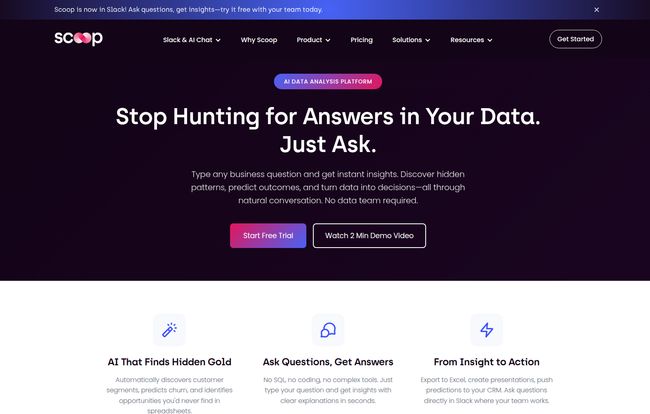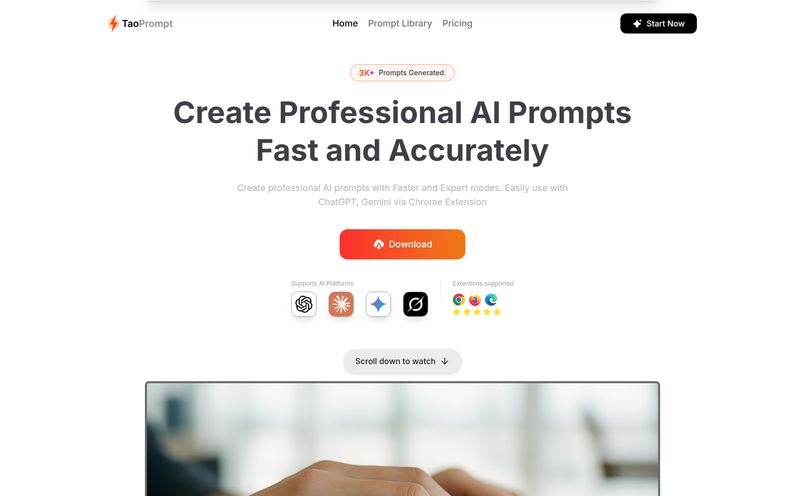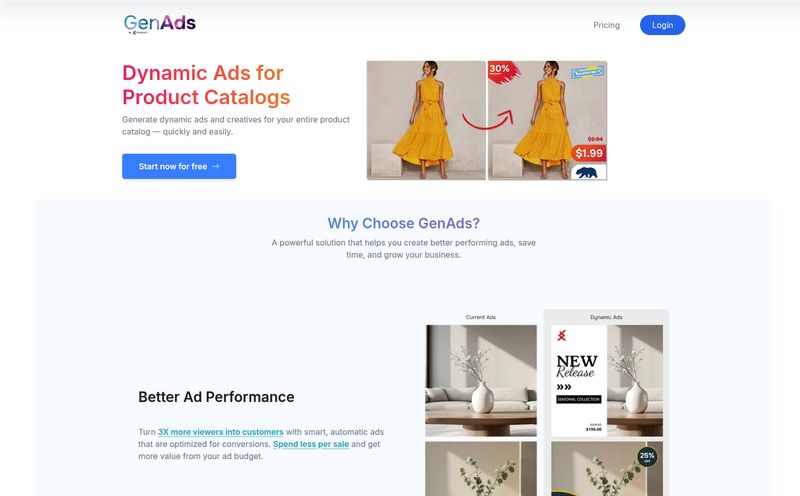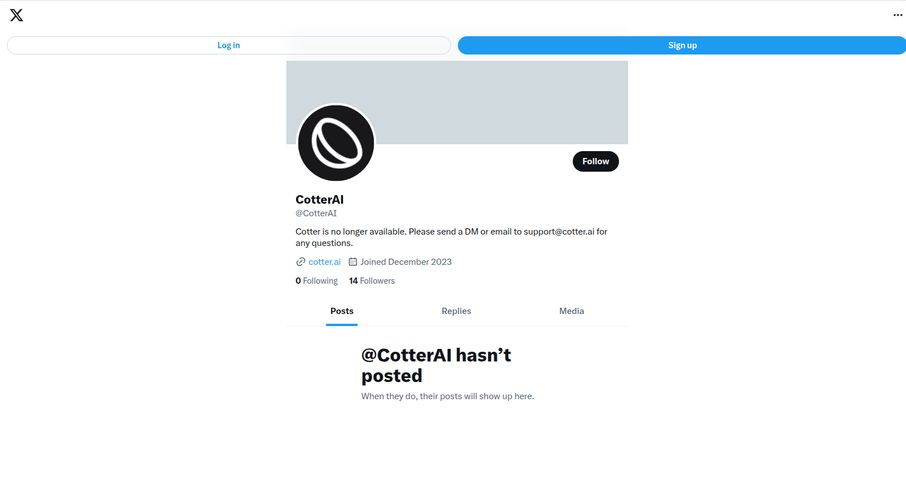We've all been there. You're sitting in a meeting, staring at a dashboard that’s supposed to be the holy grail of business intelligence. It’s a kaleidoscope of colorful charts and spiraling graphs, but you have no earthly idea what it’s actually telling you. You know the answers you need are buried somewhere in your company's data, but getting to them feels like trying to get a straight answer from a politician.
You either have to file a ticket with the over-worked data team (and wait two weeks for a report that answers the wrong question), or you try to wrestle with the BI tool yourself, only to be met with a cryptic interface that practically demands a Ph.D. in computer science. It’s a frustrating cycle. We’re swimming in data, but dying of thirst for actual insights.
For years, I've been on the hunt for a tool that breaks this cycle. Something that closes the gap between business folks with questions and the data that holds the answers. And I think I might have finally found a serious contender. It’s called Scoop Analytics, and it’s making some pretty bold claims about letting you just… ask your data questions. In plain English. Like you're chatting with a colleague.
Skeptical? I was too. So I did a deep dive.

Visit Scoop Analytics
So, What's the Big Deal with Scoop Analytics Anyway?
On the surface, Scoop looks like another BI tool. But that’s like saying a smartphone is just a device for making calls. The core difference is its engine. Scoop isn't just about visualizing data you’ve already figured out how to pull. It’s an AI-powered platform built on real machine learning that does the heavy lifting for you.
Think of it less like a spreadsheet on steroids and more like a translator. It sits between you and your complex data sources (Salesforce, HubSpot, databases, you name it) and lets you have a conversation. You ask, “Which of my customers are most likely to churn in the next month?” and instead of a blank stare, it runs millions of calculations in the background to give you an actual, actionable list. No SQL, no Python, no sacrificial offerings to the IT gods required.
This isn't just another ChatGPT wrapper, either. It’s designed to automatically find statistically significant patterns, drivers, and segments that you would never think to look for. It's the difference between asking for a fish and being given a fishing rod that baits its own hook and tells you where the fish are biting.
More Than Just Pretty Charts: Scoop's Core Capabilities
I’ve seen a lot of tools promise the world, so I always focus on what a platform can actually do. Here’s where Scoop really started to impress me.
Talk to Your Data (Literally)
This is the headline feature, and for good reason. The ability to type a question like “What were our top-performing marketing channels for Q3?” or “Show me deals over $50k that are at risk” and get an instant analysis is, frankly, what we’ve been promised for years. It lowers the barrier to entry so dramatically that anyone from a sales manager to a marketing coordinator can start finding their own answers.
The Crystal Ball for Your Business
This is where things get a bit sci-fi. Scoop doesn’t just report on the past; it builds predictive models with a single click. I’m talking about things like:
- Churn Prediction: It can analyze your customer behavior and flag accounts that are showing signs of leaving, sometimes up to 45 days in advance. That’s huge.
- Sales Forecasting: Instead of relying on gut feelings, it can predict which deals are most likely to close based on historical patterns, helping teams focus their efforts where it counts.
This moves you from being reactive to proactive, which is the whole point of using data in the first place.
Uncovering Hidden Treasure in Your Datasets
Perhaps the most powerful feature for a marketer like me is its ability to find hidden segments. You might think your ideal customer is a mid-sized tech company on the West Coast. But Scoop might analyze your data and reveal a completely overlooked segment—say, small financial firms in the Midwest—that converts at 3x the rate. These are the kinds of insights that can genuinely change the direction of a business, and they're almost impossible to find manually.
Plays Nice with Others: Seamless Integrations
A tool is only as good as the data it can access. Scoop seems to get this, offering connections to over 100 data sources. We're talking CRMs like Salesforce and HubSpot, databases, and even simple spreadsheet uploads. Crucially, it doesn’t just pull data; it can push insights back. Imagine your CRM automatically being updated with a “churn risk” score for every customer. That’s not just data analysis; that's workflow automation.
Let's Talk Money: Scoop Analytics Pricing
Alright, the all-important question: what’s this going to cost? The pricing structure is refreshingly straightforward, which I appreciate. They have a few tiers aimed at different users.
| Plan | Price | Best For |
|---|---|---|
| Free Trial | Free for one month | Dipping your toes in. You get one user and one data source to test the core functionality. A no-brainer to try. |
| Individual | $99 / user / month (billed annually) | The solo data wrangler, a freelancer, or a manager in a small team who wants to prove the concept. |
| Team | $149 / user / month (billed annually) | Small to medium-sized teams that need to collaborate on insights. Supports more users and data sources. |
| Enterprise | Custom Pricing | Large organizations with complex needs, requiring unlimited data sources, custom onboarding, and premium support. |
The pricing seems competitive, especially when you consider the potential ROI from finding just one high-value customer segment or preventing a few major accounts from churning. The fact they offer a one-month free trial is also a big plus—it shows they’re confident in their product.
My Honest Take: The Good, The Bad, and The Game-Changing
No tool is perfect, right? After digging in, here’s my brutally honest assessment.
What I Love
The democratization of data is the number one win here. It takes analytics out of the hands of a specialized few and gives it to the people on the front lines. The focus on real machine learning, not just surface-level AI chat, delivers insights you wouldn't find otherwise. I’ve seen claims of a 287% ROI, and while that sounds like marketing speak, I can actually see how finding just a couple of key drivers in your data could easily pay for the tool many times over. Plus, it's SOC2 Certified, so the security-conscious folks can rest a bit easier knowing their data isn't being used to train some global AI model.
Things to Keep in Mind
The website is, understandably, all sunshine and rainbows. So, what's the catch? Well, no tool can magically clean up messy data. The old saying “garbage in, garbage out” still applies. The quality of your insights from Scoop will depend on the quality of the data you feed it. Also, while it’s designed to be simple, moving from asking basic questions to building complex, multi-source analyses will likely have a learning curve. It’s not magic; it’s just very, very good technology. It’s a tool to empower your thinking, not replace it.
Is Scoop Analytics Worth the Hype?
My verdict? Yes, for the right team, Scoop Analytics looks like a genuine game-changer. If you’re a business leader, marketer, or salesperson who feels handcuffed by traditional BI tools and reporting bottlenecks, this could be the key to unlocking your data.
It's for the curious, for the people who want to move faster than their organization’s bureaucracy allows. It’s for teams that believe their best competitive advantage is hiding in their own data, if only they could get to it. If that sounds like you, then I’d say the free trial is absolutely worth your time. You might just be surprised by the answers you find.
Frequently Asked Questions about Scoop Analytics
- Do I really need to know SQL or Python to use Scoop?
- Nope, not at all. That's the whole point. The platform is designed for you to ask questions in plain English. The AI handles all the technical query-writing and data crunching in the background.
- How secure is my company's data with Scoop?
- Security is a big deal, and they seem to take it seriously. Scoop Analytics is SOC2 Certified, which is a key industry standard for data security and privacy. They explicitly state that your data never trains their AI, so it remains your own.
- What kind of data sources can I connect to Scoop?
- They list over 100 connectors. This includes popular CRMs like Salesforce and HubSpot, support desks like Zendesk, databases, and you can even upload spreadsheets (CSV, XLS). It covers most of the common data sources a business would use.
- Can I integrate Scoop's predictions into my other tools?
- Yes. This is a powerful feature. You can push predictions and scores (like a customer's churn risk) back into your CRM. This allows your team to act on the insights directly within their existing workflows.
- Is Scoop just for big companies?
- Not necessarily. While they have an Enterprise plan, the Individual and Team plans are clearly aimed at smaller businesses, startups, and individual departments that want to leverage advanced analytics without a massive budget or a dedicated data science team.
The Final Word
In a world drowning in data, tools like Scoop Analytics are more than just a convenience—they're becoming a necessity. By making sophisticated analysis accessible through simple conversation, it empowers the people who know the business best to make smarter, data-driven decisions. It’s a powerful concept, and from what I’ve seen, the execution is pretty darn impressive. It might just be time to stop hunting for answers and start asking for them.



